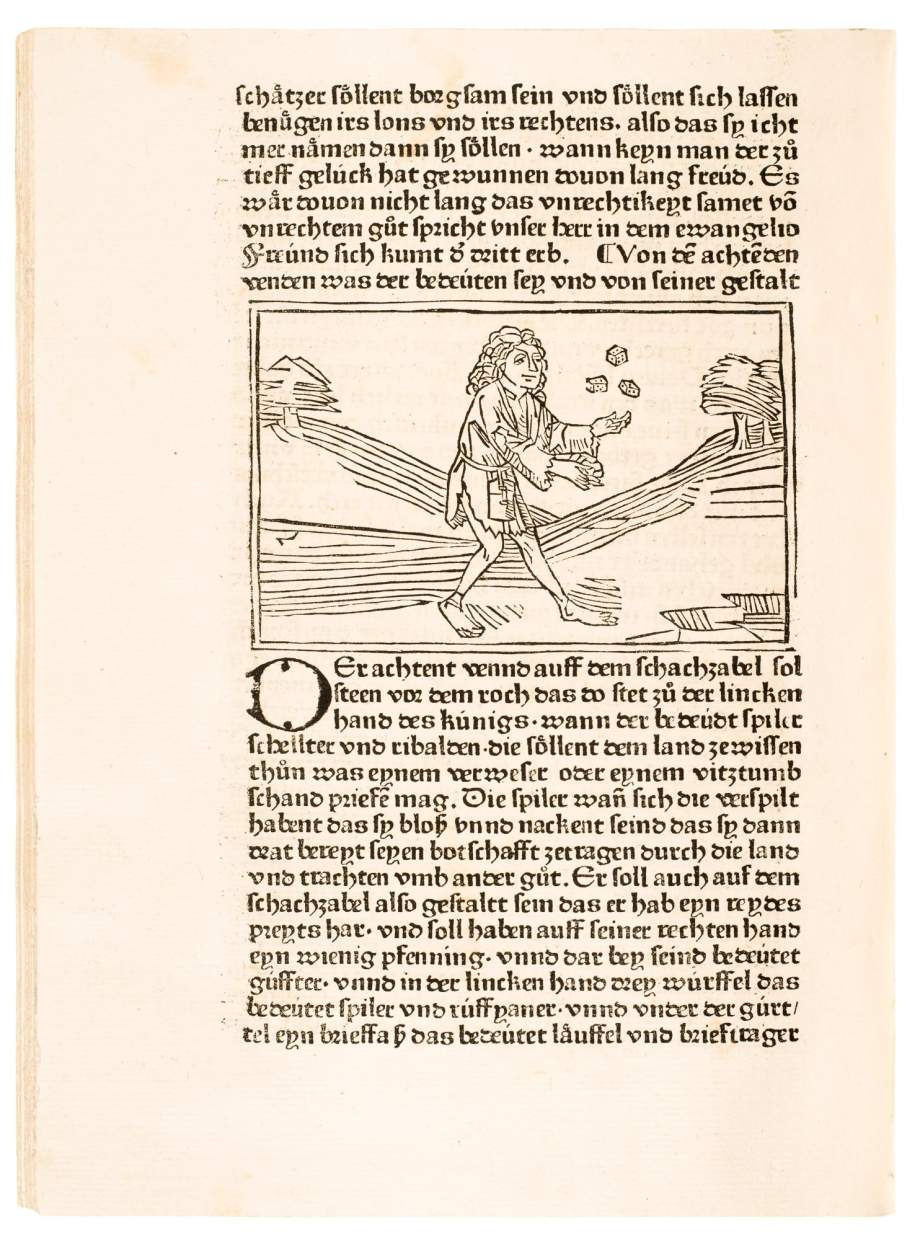

Jacobus de Cessolis, (De ludo scachorum, in German) Das spil das do heysset schachzabel [Augsburg: Günther Zainer], 1477
First edition in German; first illustrated edition
270 x 195 mm


Jacobus de Cessolis, (De ludo scachorum, in German) Das spil das do heysset schachzabel [Augsburg: Günther Zainer], 1477
First edition in German; first illustrated edition
270 x 195 mm
Hide caption

Jacobus de Cessolis, (De ludo scachorum, in German) Das spil das do heysset schachzabel [Augsburg: Günther Zainer], 1477
First edition in German; first illustrated edition
270 x 195 mm
Hide caption
This work is now sold.
The 13th-century Dominican monk, Jacobus de Cessolis, likely learned to play chess in Lombardy, considering his familiarity with Lombard chess rules. While he does focus on the moves that each piece on a chess board is able to play, de Cessolis is more concerned by the medieval social order of estates, and the hierarchy of society.
In four books, the author deals with the origins of the game of chess and its reason for invention, the way the pieces represent ranks in society (the pawns are interestingly represented as a farmer, blacksmith, weaver, and other labouring professions), and then the chessboard itself.
This work was extremely popular, with fifty manuscripts in German alone, and eight different translations in prose and poetry. The woodcut illustrations were also reproduced from the original, appearings as copies in Hienrich Knoblochtzer's Strasbourg editions of c. 1478 and 1483.
See this in our catalogue Heroes and Heroines, and our brochure, In Pursuit of Masterpieces.



